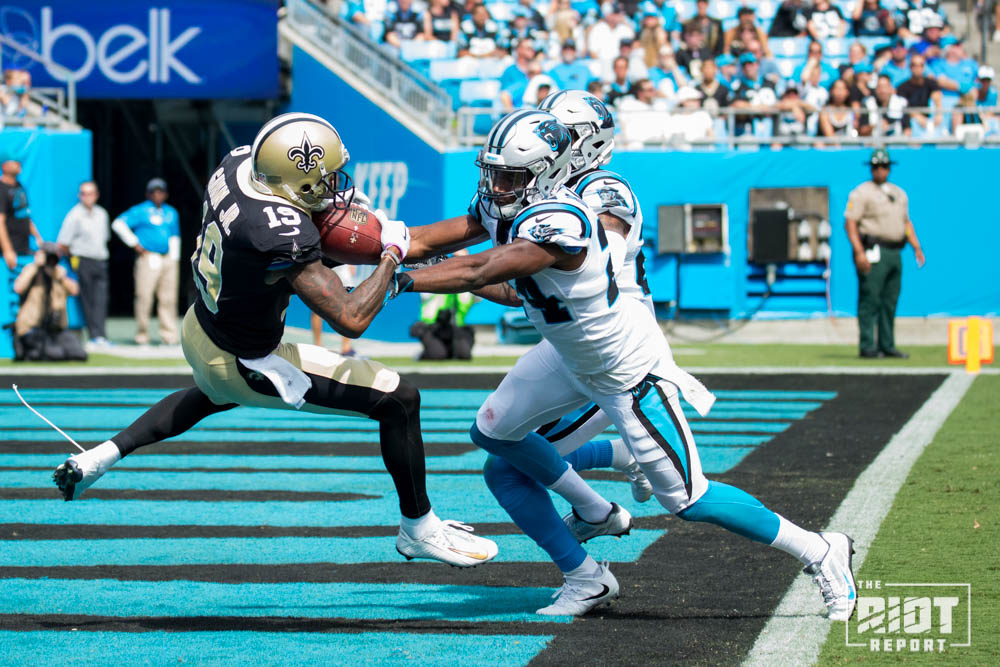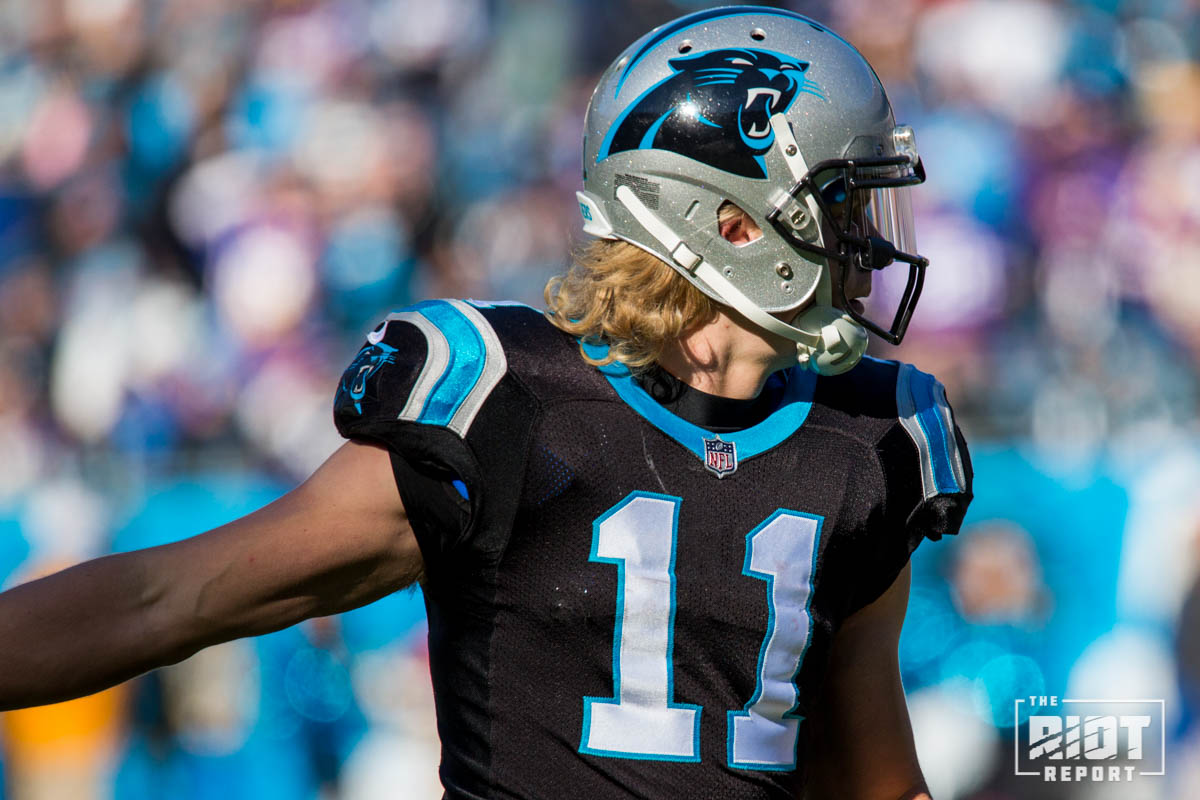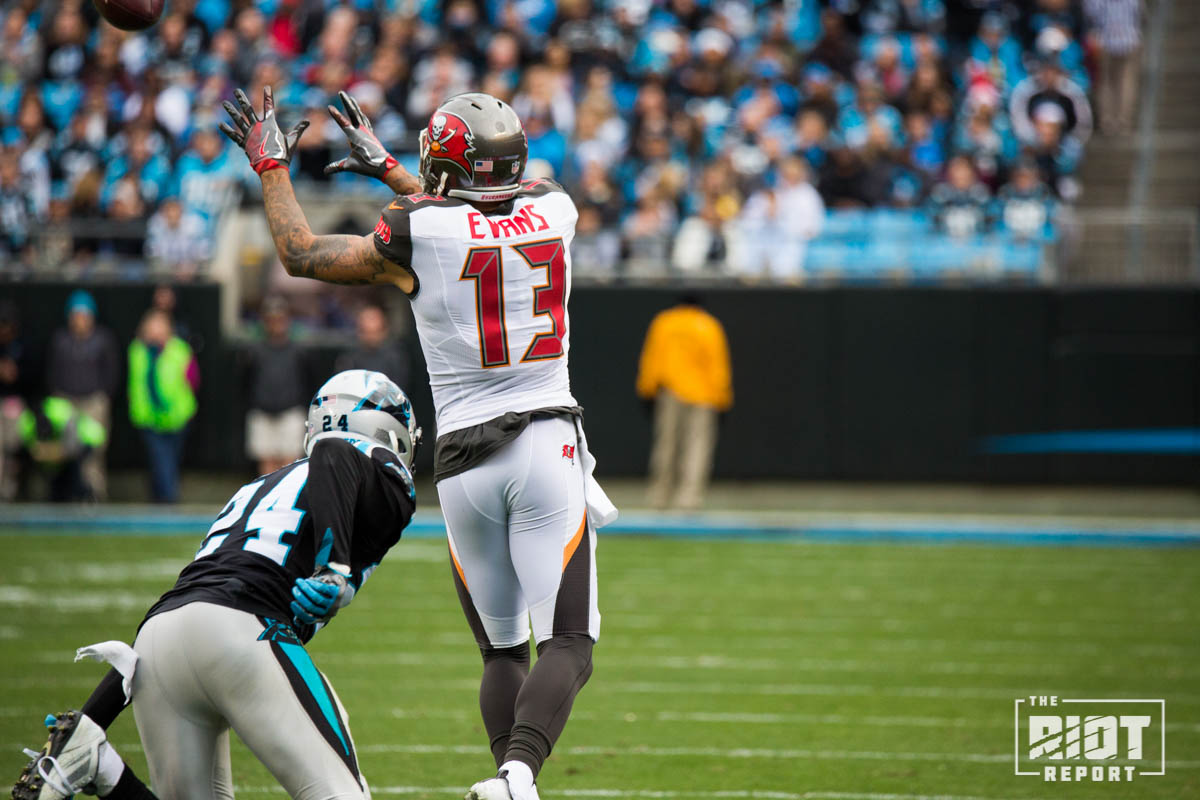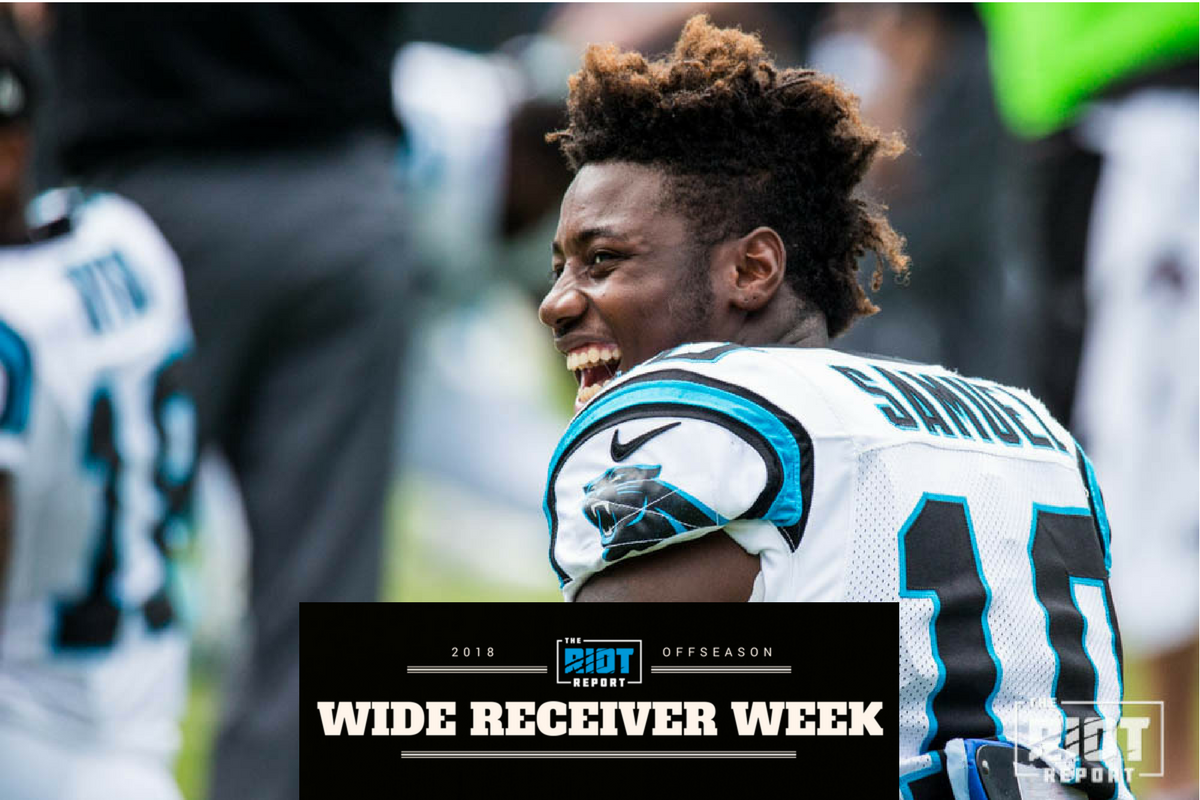Each week this offseason, we’ll be focusing on one position and how the Panthers may choose to address their needs; whether they’re in the market for an upgrade at starter or just a reliable backup, every player on the 53-man roster is going to be important in 2018.
This is Wide Receiver Week.
Over the past five seasons, 20 wide receivers have been drafted in the first round of the NFL draft, and while some, such as Amari Cooper, DeAndre Hopkins and Odell Beckham, Jr. have more than shown themselves worthy of that investment, many more have failed to amount to anything in the NFL. In all, using AAV data, it can be judged that three quarters of these first round wideouts have failed to amount to anything more than mediocrity at the NFL level: why does this continue to happen? What goes wrong?
Lower Quality Product

In his press conference prior to the 2016 NFL Draft, Dave Gettleman spoke about how the players leaving college are less developed than in previous years; as more and more players declare early and as regulations tighten about how often college teams can practice, the players entering the NFL have done so with a less polished skill set. At receiver, this has been further exaggerated by the move towards more and more spread offenses at the collegiate level; typically, these schemes run a very limited range of routes, often relying on speed and taking advantage of defensive breakdowns to generate plays in the passing game, rarely asking receivers to separate against tight man coverage.
Defenses also have a part to play in this issue, as with many teams going faster on offense and suffering from limited training hours, many college defenses have resorted to running more and more simplistic schemes, typically with less man coverage and almost no press. This, by proxy, means that many receivers who enter the NFL have rarely faced schemes similar to those run by most NFL teams; the learning curve is made even steeper than it is for the average player. As has been described in an earlier piece on cornerbacks, the larger the gap between the college and NFL games at a given position, the more teams have to project as opposed to merely observing. This, in turn, increases the margin of error for NFL scouts and in the miss rate when drafting prospects. Unsurprisingly, this is borne out in the data.
Between 2013 and 2017, receivers drafted in the first round had a 25% chance of having an AAV/game over 0.5, and a 30% chance of having one under 0.25, with an average value of 0.35. By comparison, receivers drafted in the first round between 2008 and 2012, 33% have gone on to post an average over 0.5 with just 20% posting a ratio of under 0.25; the average value is 0.41. This marks a significant increase in both the average and the number that become good NFL receivers, but also a dramatically lower rate of complete failure. The only receiver taken in the top 25 during this period to post an AAV/game of under 0.25 was Darius Heyward-Bey. Sorry, Raiders fans.
While these sample sizes are small, they provide compelling evidence towards the conclusion that the receiver prospects entering the NFL do so at a lower level of technical progression, and so the process of evaluating receivers has become more and more about projection. So what makes this projection such an apparently difficult prospect?
Value Judgement

For teams to be able to project players who lack a polished skill set in college, they needs to be able to judge how good a player will be at things that, at a fundamental level, they have not seen them try and achieve. There are generally two ways in which teams attempt to do this: either they look to test these skills in a non-game scenario or they look to extrapolate from observed skills to build a picture of what they think the unobserved skills will be. Depending on the position and even the player in question, which of these avenues teams rely on varies, but for the most part, teams tend to err towards extrapolating from observed skills.
Where the problem comes from is that teams are then tasked with identifying what skills are most valuable for receivers to have; if they are missing from a player’s game, what other skills can be most effectively extrapolated to project these skills? While it is quite difficult to make hard statements in this area (certainty is not really possible), it does seem as if the some of the current assessments in this area are somewhat lacking. At the NFL level, what separates good receivers from the rest is almost entirely their ability to separate against man coverage. Brenton Bersin can catch the ball as well as almost anybody in the NFL, and he can certainly find the holes in a zone; he just can’t separate against man coverage.
The question then becomes, what allows a receiver to separate against man coverage at the NFL level? While speed and other athletic traits do play a part in this, if you look at the top receivers in the NFL, what sets them apart from the rest is their ability to get release off the line and the quality of their routes; while Antonio Brown is not the fastest player in the NFL, he runs extremely good routes, which allows him to get open against man coverage, which makes him the best wide receiver in the league. While it wouldn’t be fair to say that the NFL doesn’t appear to value route running when evaluating wide receivers, it does seem as if it is not as highly valued as perhaps it should be; this is what allows players such as Keenan Allen, Michael Thomas and Allen Robinson to fall somewhat in the draft compared to the likes of Tavon Austin, Corey Coleman and Kevin White, who all boasted strong combine numbers but failed to show much as route runners while in college.

Of course, there are some players who enter the NFL having only been asked to run very limited route trees in college; these are not necessarily bad route runners, just limited ones. For those players the equation becomes somewhat harder, but while there are some cases where teams have little chance of accurately gauging a players’ ability, in most cases, a reasonable amount can be extrapolated from the way in which even a limited route tree is run. The keys to running most routes are the ability to change direction sharply while maintaining momentum, as well as an understanding of how to create separation through the use of dummy movements and speed variations.
Assessing these traits is not a trivial exercise, and to expect any team to do so to an extremely high level of accuracy is unrealistic, but when looking at evaluations of receivers during this draft process and during free agency, look out for descriptions such as ‘athletic’, ‘explosive’ and an overvaluation on a player’s ability in the air or after the catch. Often, the players who do the best are not those who run the fastest (although of course this is not without value), but rather those who do the little things well.
As the Panthers found out late on in the 2017 season, separation is key when it comes to wide receivers.



